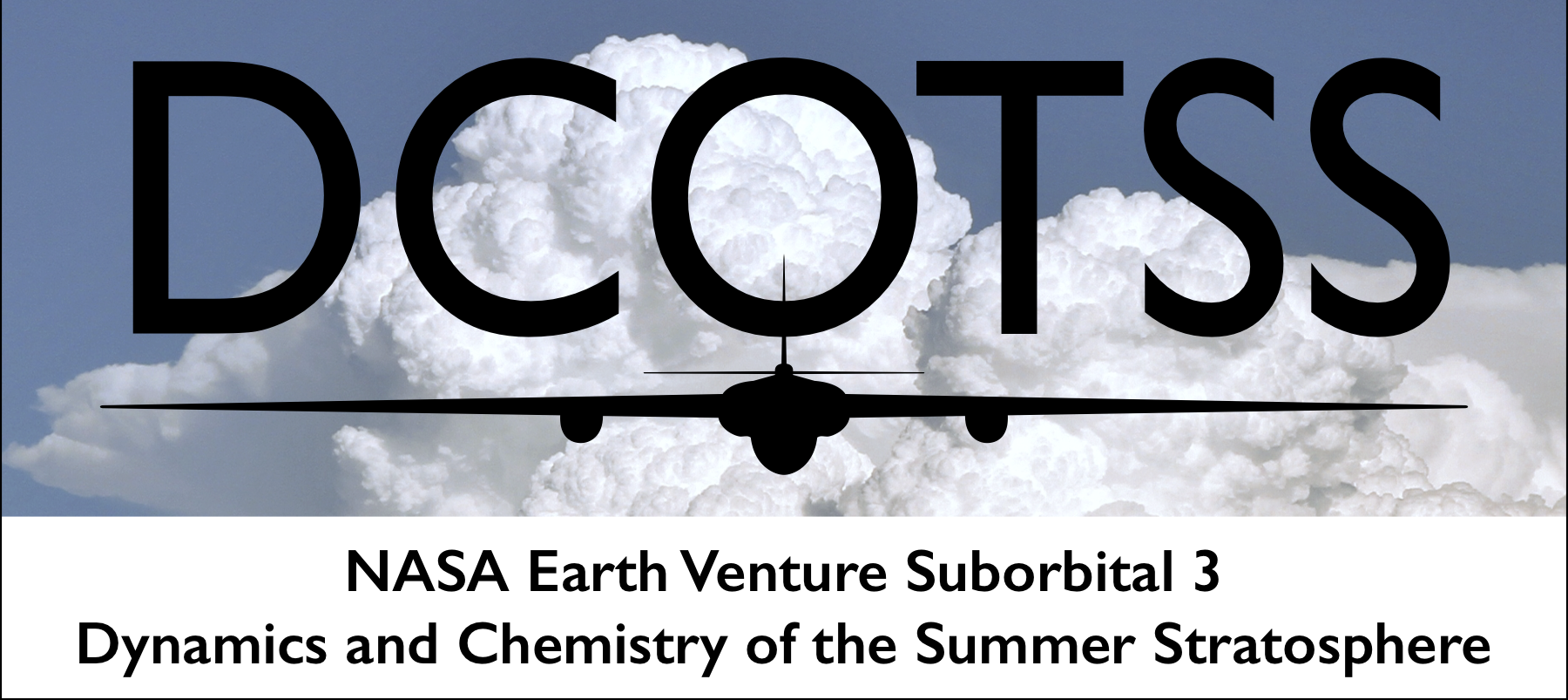

| Overview | Science | Project | Data | People | Publications | News |
08 August 2022
NASA's Summer Storm Research Is Flying Into The Next Stage (NASA Blog)
29 June 2022
Researchers Use Spy Plane Owned by NASA to Study Long-term Effects of Storm Systems (Channel 6; Tulsa, OK)
10 June 2022
Collaboration key to successes of NASA mission in Salina this month (Salina Journal)
9 August 2021
Can Intense Thunderstorms Alter the Stratosphere? NASA Intends to Find Out (Scientific American)
04 August 2021
Storm Outflow Chasing High Up in the Stratosphere (NASA Blog)
28 July 2021
NASA brings high-altitude research plane to Salina Regional Airport (Salina Journal)
28 July 2021
NASA's new mission studies how intense thunderstorms may influence climate change (ABC News story)
26 November 2019
NASA Embarks on Five U.S. Expeditions Targeting Air, Land and Sea (NASA EVS-3 press release)
25 April 2019
Into the overworld: modified spy plane to see whether towering storms pose new threat to ozone layer (Science news story)
23 October 2018
Texas A&M University press release
1 October 2018
NOAA ESRL press release
25 September 2018
NASA announced today that the Dynamics and Chemistry of the Summer Stratosphere (DCOTSS) project has been selected as one of five Earth Venture Suborbital science campaigns that will begin in 2019. DCOTSS, led by Kenneth Bowman of the Department of Atmospheric Sciences at Texas A&M University, will investigate how strong convective storms over the U.S. affect the summertime stratosphere.
The project will use the NASA ER-2 high-altitude research aircraft, in combination with groundbased meteorological radars and NASA and NOAA earth observing satellites, to study the interaction between intense convective storms, These storms regularly penetrate deep into the lower stratosphere, carrying pollutants that can change the chemical composition of this atmospheric layer, potentially including stratospheric ozone.
Participating universities and government organizations include Texas A&M University, Harvard University, Massachusetts Institute of Technology, NASA Ames Research Center, NASA Armstrong Flight Research Center, NASA Goddard Space Flight Center, NASA Langley Research Center, the National Center for Atmospheric Research, the National Oceanic and Atmospheric Administration, Texas A&M University Corpus Christi, the University of Miami, the University of North Dakota, and the University of Oklahoma.
Research flights by the ER-2 aircraft will take place during the summers of 2020 and 2021 from Salina, Kansas.